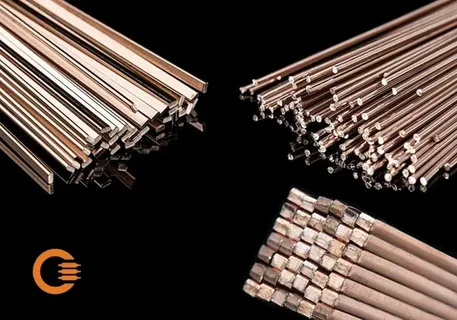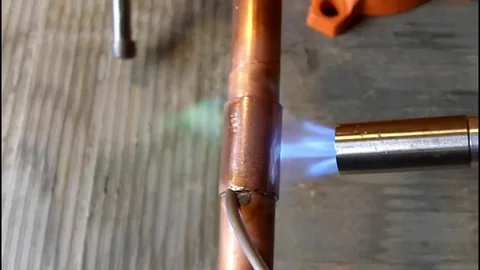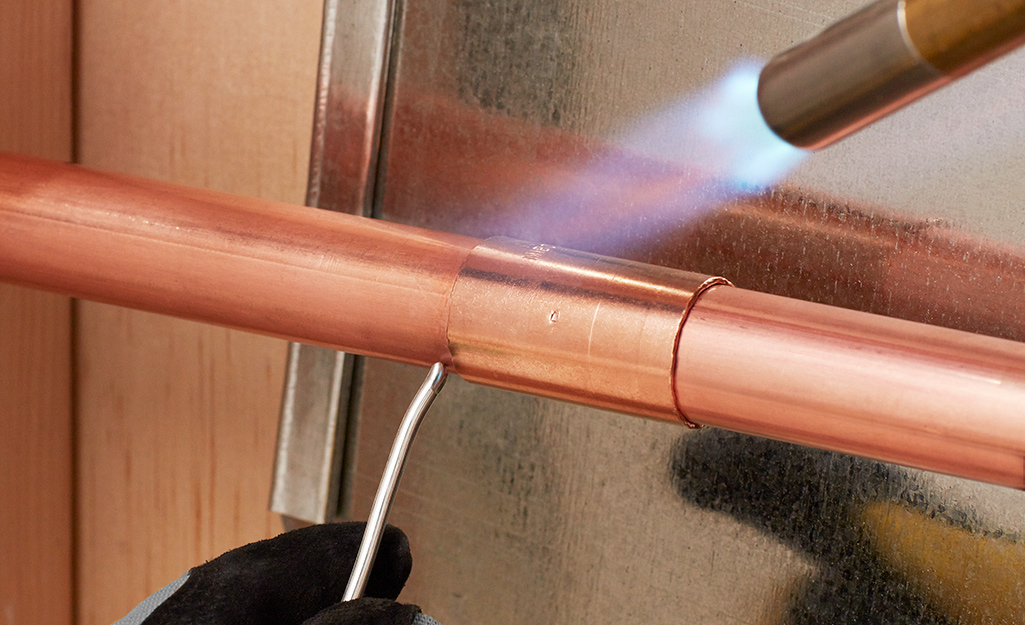Copper brazing is a vital process used in various applications to join copper and other metals effectively. Understanding copper brazing, its applications, and how it compares to other joining techniques like soldering can enhance your knowledge and skills in metalworking. This guide will provide a thorough overview of copper brazing, its techniques, and its differences from soldering.
What Is Copper Brazing?

Copper brazing is a metal joining process where copper is used as a filler material to bond two or more pieces of metal together. This process involves heating the metals and the filler to a temperature above 450°C (about 840°F), but below the melting point of the base metals. The filler material, usually copper or a copper alloy, flows into the joint through capillary action and solidifies to form a strong, durable bond.
Key Characteristics of Copper Brazing
Temperature Range
Copper brazing requires heating to temperatures between 450°C and 1150°C (about 840°F to 2100°F). This range is higher than soldering but lower than welding, making it suitable for various applications.
Filler Materials
The filler material used in copper brazing is typically a copper alloy that may include elements like zinc or silver to enhance its properties. These alloys are selected based on the materials being joined and the required strength of the joint.
Advantages of Copper Brazing
Strength and Durability
Copper brazing creates strong joints that can withstand high pressures and temperatures. This makes it ideal for applications in industries like HVAC, plumbing, and automotive.
Corrosion Resistance
Copper brazing provides joints with excellent corrosion resistance, which is essential for applications exposed to harsh environments.
Pipe Brazing: Techniques and Applications

Pipe brazing involves joining copper pipes or tubes using the brazing process. This technique is widely used in plumbing and HVAC systems to create leak-proof connections.
Process of Pipe Brazing
Preparation
Before brazing, the copper pipes must be cleaned and fitted. The surfaces to be joined should be free from oxidation, dirt, and grease. A suitable flux is applied to prevent oxidation during the heating process.
Heating
The pipes are heated using a torch until they reach the required temperature for brazing. The filler material is then applied to the joint, where it flows into the space between the pipes and solidifies upon cooling.
Inspection
After brazing, the joint is inspected for leaks and structural integrity. Proper inspection ensures that the joint will perform reliably under operational conditions.
Common Applications
Plumbing Systems
In plumbing, pipe brazing is used to join copper pipes for water supply and heating systems. The strong, durable joints are essential for maintaining system integrity and preventing leaks.
HVAC Systems
In HVAC systems, pipe brazing is used to connect copper tubing in refrigeration and air conditioning systems. The process ensures that the connections can withstand the pressures and temperatures involved.
Soldering Copper Pipes vs. Copper Brazing

Soldering Copper Pipes
Soldering involves using a filler metal with a melting point below 450°C (about 840°F) to join copper pipes. This process is generally used for smaller joints and less demanding applications.
Advantages of Soldering
- Lower Temperature: Soldering requires lower temperatures, which reduces the risk of damaging the pipes.
- Ease of Use: Soldering is simpler and often used for DIY projects.
Disadvantages of Soldering
- Lower Strength: Soldered joints are not as strong as brazed joints and may not be suitable for high-pressure applications.
- Less Durable: Soldered joints can be more prone to leakage and failure over time compared to brazed joints.
Copper Brazing
Copper brazing, on the other hand, uses higher temperatures and different filler materials to create stronger and more durable joints.
Advantages of Copper Brazing
- Higher Strength: Brazed joints are stronger and more suitable for high-pressure and high-temperature applications.
- Better Durability: The brazed joints are more resistant to wear and corrosion.
Disadvantages of Copper Brazing
- Higher Temperature: The process requires higher temperatures, which can be more challenging and require more advanced equipment.
Brazing vs. Soldering: Key Differences
Temperature Requirements
Brazing requires higher temperatures compared to soldering. This difference in temperature affects the strength and applications of the joints.
Filler Materials
The filler materials used in brazing are typically stronger and more durable compared to those used in soldering. This results in more robust joints.
Applications
Brazing is preferred for high-pressure and high-temperature applications, while soldering is often used for less demanding tasks.
Understanding Brazing in HVAC Systems
Brazing HVAC Components
In HVAC systems, brazing is used to join copper tubing and other components. This process ensures leak-proof connections that can withstand the system’s operating pressures and temperatures.
Applications in HVAC
- Refrigeration Lines: Brazing is used to join refrigerant lines in air conditioning systems.
- Heat Exchangers: Brazing helps create durable connections in heat exchangers.
Advantages of Brazing in HVAC
- Reliability: Brazed joints provide reliable connections that can handle the stress of HVAC systems.
- Durability: The joints are less likely to leak or fail over time.
Sweating Copper to Brass: A Specific Application
Process of Sweating Copper to Brass
Sweating, or soft soldering, is a technique used to join copper to brass. This involves using solder to join the two metals, requiring careful preparation and proper flux application.
Steps for Sweating Copper to Brass
- Clean the Surfaces: Both the copper and brass surfaces must be clean and free of contaminants.
- Apply Flux: Apply flux to both surfaces to prevent oxidation during heating.
- Heat and Solder: Heat the joint area and apply solder to create a strong bond.
Advantages
- Versatility: Sweating is useful for various applications, including plumbing and electrical connections.
- Simplicity: The process is relatively simple and does not require high temperatures.
Conclusion
Copper brazing is a crucial technique for creating strong, durable joints in various applications. Understanding the differences between brazing and soldering, as well as knowing how to perform these techniques correctly, can enhance the quality and reliability of your metalworking projects. Whether you are working with pipe brazing, HVAC systems, or sweating copper to brass, mastering these processes ensures effective and long-lasting results.
